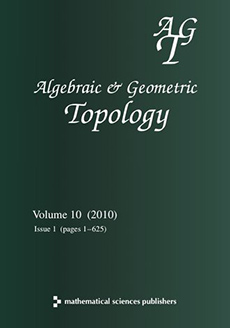Abstract
The representation of knots by petal diagrams (Adams et al 2012) naturally defines a sequence of distributions on the set of knots. We establish some basic properties of this randomized knot model. We prove that in the random –petal model the probability of obtaining every specific knot type decays to zero as , the number of petals, grows. In addition we improve the bounds relating the crossing number and the petal number of a knot. This implies that the –petal model represents at least exponentially many distinct knots.
Past approaches to showing, in some random models, that individual knot types occur with vanishing probability rely on the prevalence of localized connect summands as the complexity of the knot increases. However, this phenomenon is not clear in other models, including petal diagrams, random grid diagrams and uniform random polygons. Thus we provide a new approach to investigate this question.
Citation
Chaim Even-Zohar. Joel Hass. Nathan Linial. Tahl Nowik. "The distribution of knots in the Petaluma model." Algebr. Geom. Topol. 18 (6) 3647 - 3667, 2018. https://doi.org/10.2140/agt.2018.18.3647
Information





